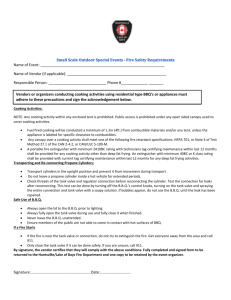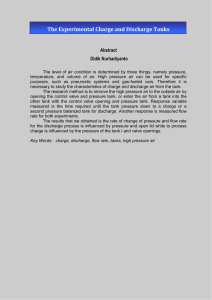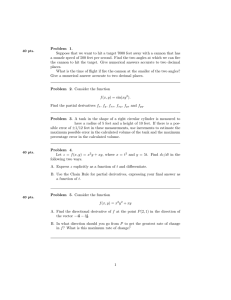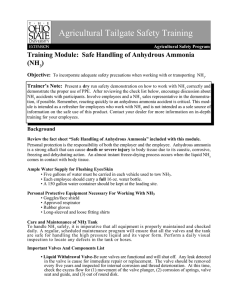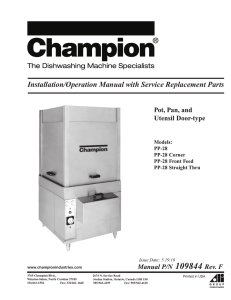Alex French Technote- Pnuematics 21M.735 Pnuematic Debris Cannon
advertisement
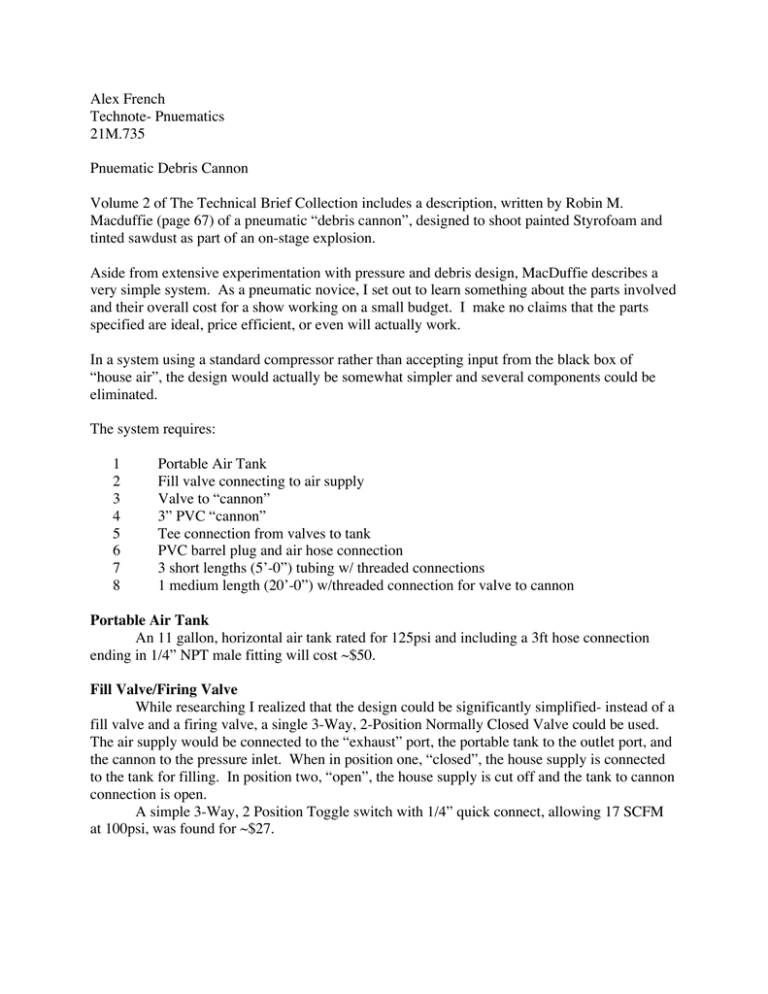
Alex French Technote- Pnuematics 21M.735 Pnuematic Debris Cannon Volume 2 of The Technical Brief Collection includes a description, written by Robin M. Macduffie (page 67) of a pneumatic “debris cannon”, designed to shoot painted Styrofoam and tinted sawdust as part of an on-stage explosion. Aside from extensive experimentation with pressure and debris design, MacDuffie describes a very simple system. As a pneumatic novice, I set out to learn something about the parts involved and their overall cost for a show working on a small budget. I make no claims that the parts specified are ideal, price efficient, or even will actually work. In a system using a standard compressor rather than accepting input from the black box of “house air”, the design would actually be somewhat simpler and several components could be eliminated. The system requires: 1 2 3 4 5 6 7 8 Portable Air Tank Fill valve connecting to air supply Valve to “cannon” 3” PVC “cannon” Tee connection from valves to tank PVC barrel plug and air hose connection 3 short lengths (5’-0”) tubing w/ threaded connections 1 medium length (20’-0”) w/threaded connection for valve to cannon Portable Air Tank An 11 gallon, horizontal air tank rated for 125psi and including a 3ft hose connection ending in 1/4” NPT male fitting will cost ~$50. Fill Valve/Firing Valve While researching I realized that the design could be significantly simplified- instead of a fill valve and a firing valve, a single 3-Way, 2-Position Normally Closed Valve could be used. The air supply would be connected to the “exhaust” port, the portable tank to the outlet port, and the cannon to the pressure inlet. When in position one, “closed”, the house supply is connected to the tank for filling. In position two, “open”, the house supply is cut off and the tank to cannon connection is open. A simple 3-Way, 2 Position Toggle switch with 1/4” quick connect, allowing 17 SCFM at 100psi, was found for ~$27. PVC Pipe PVC, bought in the least efficient possible way, was found to be ~$10 for a five foot length of 3” schedule 40 pipe. It comes with a big warning never to use it with compressed air or gas. Barrel to hose connection A 3” to 2” nipple costs ~$9. A 2” to 1.25” nipple costs ~$3. A 1.25” to 0.5” nipple costs ~1.50 and a 1/2” NPT to 1/4” quick-connect fitting costs ~4.50. Hoses The three required hoses (two short and one long with the new valve setup) I specified were two 10’ lengths and one 25’ length with one “socket” end and one male swivel end. They cost ~$26 and ~$32 respectively, for a total price of $84. Based on my estimates, MacDuffie’s complete system, except for a source of compressed air, can be built for approximately $179. Some of these components (compressed air tank hoses) may be already available even to a group using pneumatics only for construction.

